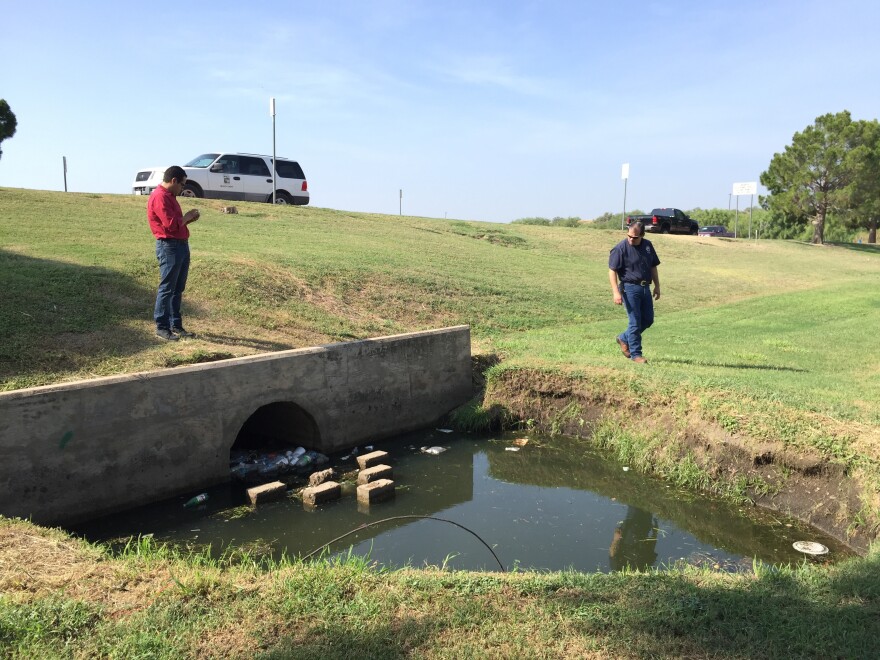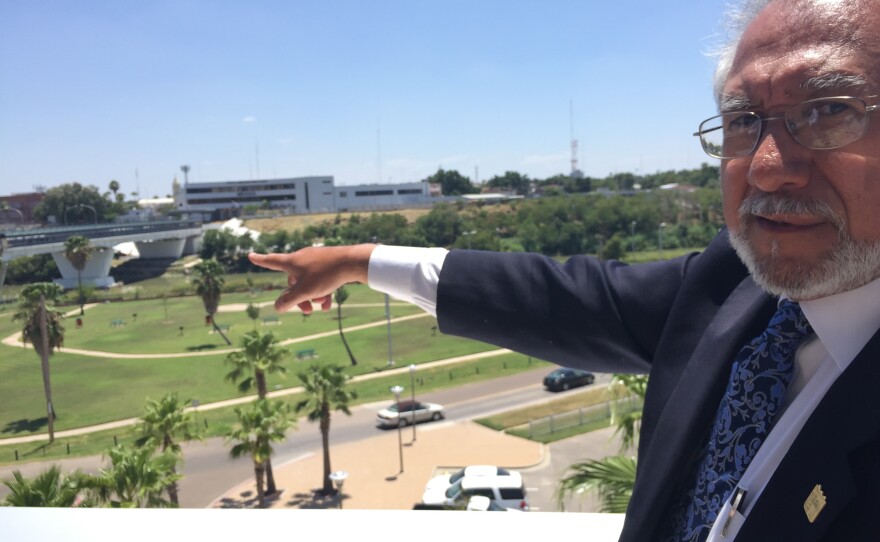Dr. Hector Gonzalez is standing on the Laredo side of the Gateway to the Americas International Bridge—staring across the Rio Grande at Nuevo Laredo, Mexico.
“The majority of trailers, the majority of people, pedestrians, the majority of cargo--comes through Laredo,” says Gonzalez, director of Laredo’s Health Department. “But that also, for us, implies disease.”
Laredo is the largest inland port in the U.S. and the center of trade with Mexico. Forty percent of all U.S. imports from Mexico—from car parts to flowers—come through Laredo. As the Zika virus spreads in Latin America, Laredo is boosting its surveillance efforts and working with the Centers for Disease Control and Prevention to monitor, detect and prevent the spread of Zika along the border.

“We know it’s a matter of time,” says Gonzalez. “The mosquito is here. Eventually, it’ll be here. All of these actions we are taking, it’s to be ready.”
The closest locally-contracted Zika cases are 150 miles away in Nuevo Leon, but tens of thousands of people and trucks pass through daily—including from outbreak areas like Honduras, Puerto Rico and Southern Mexico. The aedes aegypti mosquito species that can carry Zika is all over South Texas.
Dr. Gonzalez helps train U.S. Customs and Border Patrol to look for signs of illness among travelers entering the country—legally and illegally. They’ll make note of people coming from Zika outbreak areas. Additional screenings and tests are conducted at immigration detention centers, particularly for pregnant women.
Gonzalez has responded to smallpox scares and helped contain Tuberculosis outbreaks here at the border before. He says he’s got to be vigilant to keep the whole country safe.
“If we stop it here, then it stays here,” says Gonzalez. “Folks in Denver and in Baltimore will never see an impact because we’re containing it here.”
The health department’s epidemiologists speak regularly with Laredo’s health providers and provide patients Zika testing when necessary. They are also launching an iPhone app patients can use to self-report Zika symptoms like fever, rash and joint pain.


The CDC just hired a three-person Zika Task Force to support the city’s efforts and eventually coordinate Zika response along the Texas-Mexico border between Laredo and Brownsville. Gonzalez says the team will work closely with federal agencies at the border—and with Nuevo Laredo.
“We have a saying that if one of the Laredos sneezes, the other one catches the cold,” says Gonzalez. “Because we’re that close--and then we’re tied with trade—and family.”
But monitoring people is only half the battle. And that’s where Danny Maldonado comes in.
“Mosquitoes don’t need a car to cross the river,” Maldonado says. “They can just fly over.”
As a sanitation inspector in Laredo’s ‘vector control division’ for 15 years, Maldonado has seen local outbreaks of West Nile Virus and Dengue Fever. Zika is just one more mosquito-borne illness he’s testing for.

“This is a gravid trap,” he says. “We fill it up with water. We’ll leave it out on the site for 24 hours.”
He puts traps like this around the city, for disease surveillance. Mosquitoes are captured alive and carried by Greyhound bus to Austin for testing. A week later, results are sent informing Laredo if any of their mosquitos are carrying dangerous diseases.
The city also does mosquito control. In a drainage ditch near the border, Maldonado points out hundreds of mosquito larvae clinging to the membrane of stagnant water.
“I’m going to come back later on and larvicide this area,” he says.

Maldonado uses larvicide to take mosquitoes out before they can become vectors for diseases like Zika. He can also release minnows to gobble up the larvae. When mosquitoes get really bad, he’s got another tool—spraying.
“This is our last resort,” Maldonado says.
Mosquito breeding areas are a major concern. Discarded tires are a huge problem along the border, and they make a perfect mosquito love nest. After a dengue outbreak in the mid-1990s, Laredo passed a strict tire ordinance: big fines for tire dumping and mandates to turn in old tires before buying new ones. There’s even a public works truck dedicated to Laredo’s tire problem.
All they do is just go around picking up tires in the city,” says Laredo City Manager Jesus Olivares. “We don’t care where it is, or who it belongs to, or who threw it. We pick it up.”
Laredo’s sanitation efforts seem to be working. There are no cases of dengue here, but there are 12 cases across the river in Nuevo Laredo.
“The river here does not divide us,” says Olivares. “It unites us.”

To ensure that this bustling border city isn’t a gateway for disease, public education is key.
Erika Juarez is the city’s chief of health education. She says many Zika preventative measures people can take now aren’t too burdensome.
“Most of it, it doesn’t really cost you,” Juarez says. “You need to keep your yard clean, you need to use repellant.”
Juarez works with schools and other organizations to get information out to families, about Zika and other heath issues.
“There’s many, many, many threats,” Juarez says.
With the help of the CDC, Laredo health officials say they’re committed to defeating Zika—and other mosquito-borne illnesses. Border communities like theirs are used to being on the front lines fighting infectious disease.










